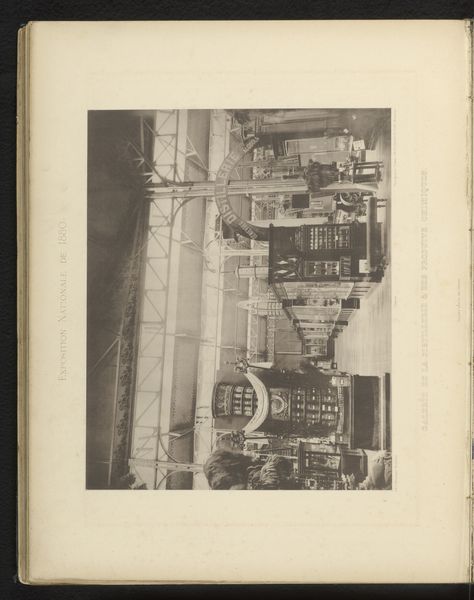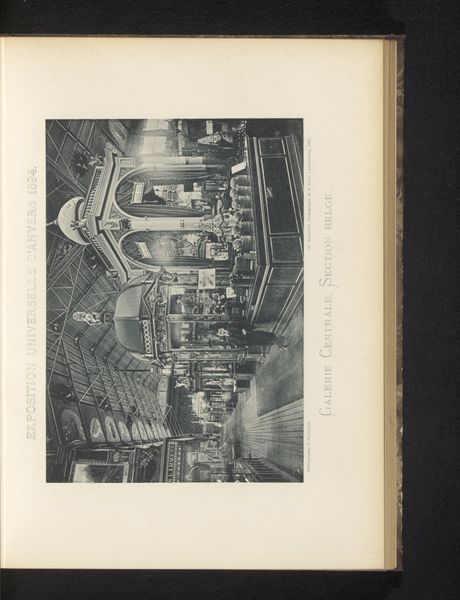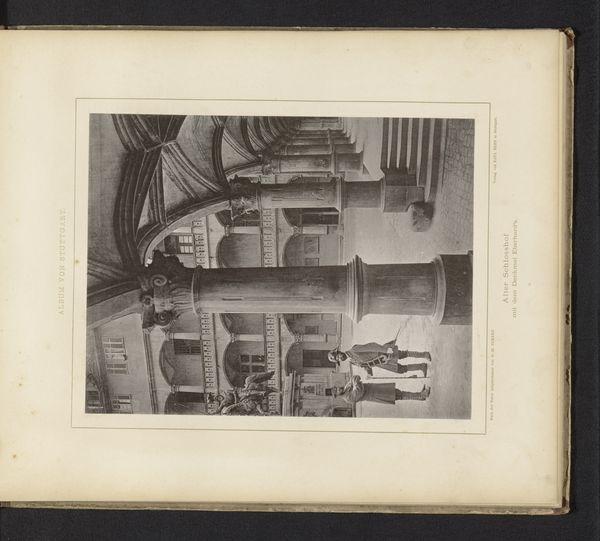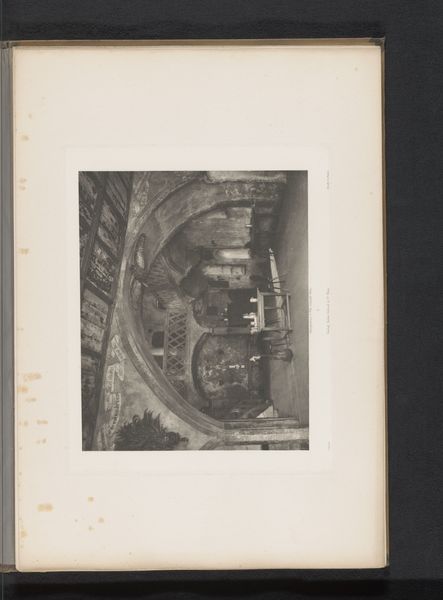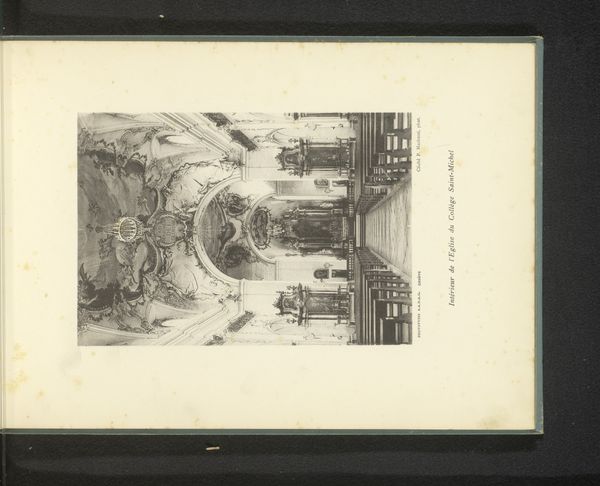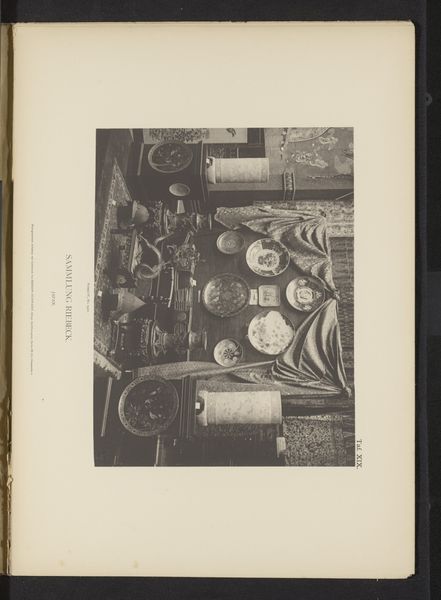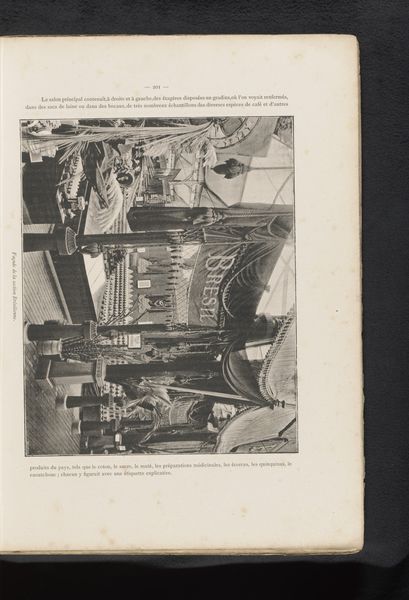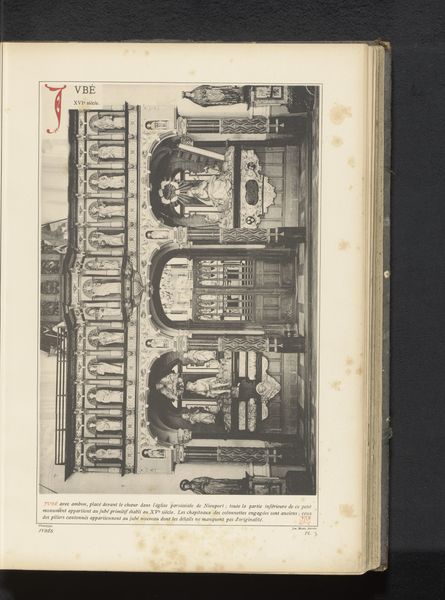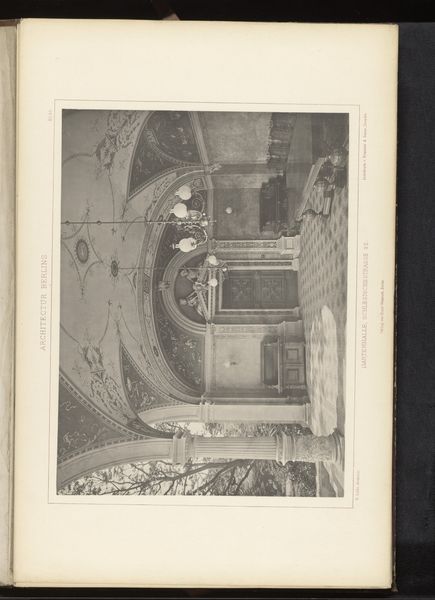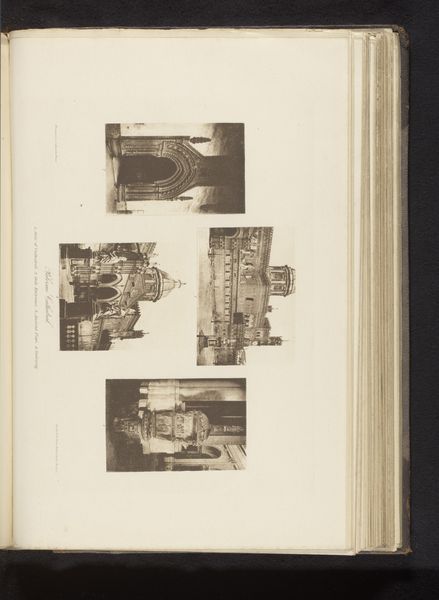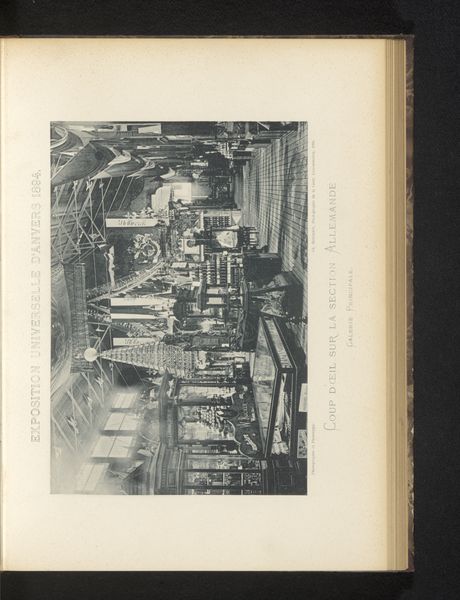
Dimensions: height 203 mm, width 300 mm
Copyright: Rijks Museum: Open Domain
Editor: Here we have "Interieur van de Basiliek van San Marco te Venetië," a gelatin silver print created before 1886 by an anonymous artist. The basilica's interior appears vast, yet subdued in these shades of gray. What strikes you most about it? Curator: For me, the immediate impact is how this photograph captures not just a space, but a system of power. San Marco wasn't merely a church; it was the doge's chapel, a visual assertion of Venetian authority and wealth. What sociopolitical statements were subtly conveyed through its architecture? Editor: I never considered that. It definitely looks grand but sort of... imposing too? I guess I was focusing on the visual details. Curator: Exactly. Now consider that this photograph, taken before 1886, emerges during a period of intense debate about representation and identity. Photography itself was becoming a tool of empire, used to document and categorize cultures. How might this image participate in, or resist, those dynamics? Think about whose gaze is being centered. Is it a Venetian gaze? A tourist gaze? Editor: It feels like it's meant to inspire awe. Maybe even… submission? The upward perspective makes everything seem larger than life. Curator: And that feeling, that sensation of being overwhelmed by the spectacle of power, is precisely what I find compelling. It’s not just a pretty picture of a basilica. It’s a historical document revealing how power was projected and consumed in the 19th century. Also, it raises an interesting question about accessibility. Who has access to spaces like this, physically and representationally, and what does that say about privilege? Editor: Wow, I'm seeing this image in a totally different light now. Thanks! Curator: It is a continuing dialogue, isn't it? Art forces us to engage in dialogues on race, class, identity and representation which are always of paramount importance.
Comments
No comments
Be the first to comment and join the conversation on the ultimate creative platform.
